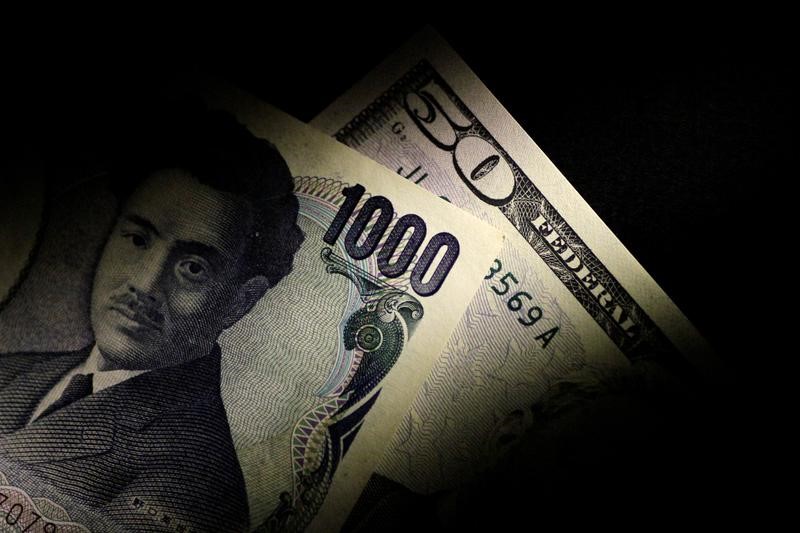Investing.com – The Japanese yen has seen some volatile trading this week, raising speculation that the country’s authorities have intervened to try to halt the seemingly relentless decline. This way we can confirm the intervention.
At 11:15 ET (15:15 GMT), the pair was trading 0.7% higher at ¥157.37, after climbing as high as ¥160.245 on Monday before reversing sharply.
The pair’s sharp decline, which amounted to buying the yen, furthered speculation that Japanese authorities had finally decided the yen selling had gone too far and wanted to prop up the beleaguered currency.
A weak yen increases the cost of imports, and Japan is heavily dependent on imports for both energy and food, meaning inflation could rise.
The yen has been falling for years as global interest rates have risen in response to resurgent inflation, while Japan’s has remained near zero.
That gap has driven money out of the yen into other, better-yielding currencies, and even in March, when Japan raised rates for the first time since 2007, the yen was still falling.
Declining expectations of rate cuts in the United States have also helped drag down the yen, which has lost more than a third of its value against the dollar since the start of 2021, leading to a Japanese intervention in late 2022.
Top currency diplomat Masato Kanda declined to say whether the Ministry of Finance (MoF) was behind the yen’s sharp rise, but he did say Japan was ready to deal with currency issues 24 hours a day.
Remove ads
.
However, the central bank’s money market projections suggested that spending may have been close to the daily record of ¥5.62 trillion (nearly $36 billion at current exchange rates) when Japan intervened in October 2022.
This could be confirmed in early May when the Ministry of Finance will announce the composition of its official reserves by the end of April – showing the size of total reserves and the balance of deposits, securities and other assets.
The MoF will announce the monthly size of interventions for the period from April 26 to May 29 at the end of May, Bank of America Securities said, and then we will know the exact size of the MoF’s currency intervention on April 29.
Daily currency intervention data for the second quarter of 2024 is expected in early August.
Still, as the yen’s retreat during Tuesday’s session indicates, Japanese authorities may have to continue to intervene given global pressure on the yen.
Of Japan’s $1.3 trillion in foreign reserves, an estimated $327 billion is parked in deposits and short-term securities with maturities of up to one year, according to BoA estimates.
“We believe the total size of the MoF’s currency interventions this year will not exceed this number unless the USD/JPY rally extends beyond ¥170,” the bank’s analysts said in an April 30 note.
“The Treasury Department would not want to sell longer-dated U.S. Treasury bonds from a currency diplomacy perspective. The country may not want to see reserves fall below $1 trillion because of the psychological impact on the market. However, these are admittedly subjective and arbitrary.”
Remove ads
.


